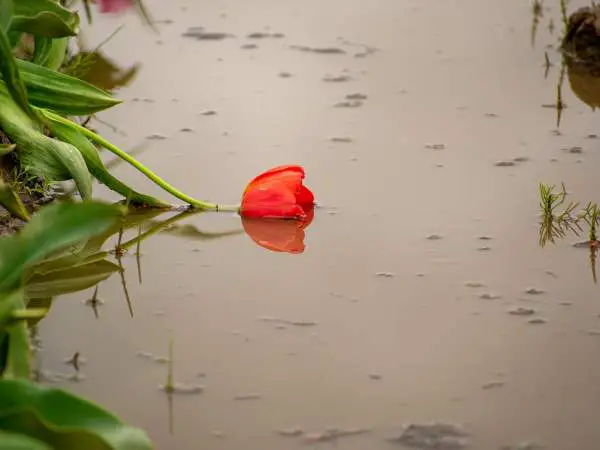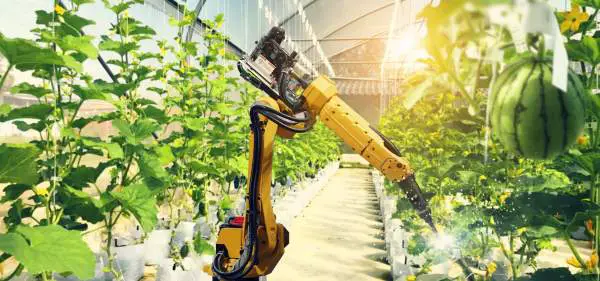Hydroponics systems are based around plants being grown in water, so why don’t plants drown? This is one of the first things, which confuses possible hydroponic growers, and it can be enough to prevent them from starting their own garden.
While there is quite a lot to understand about hydroponics, one of the very first things any growers come to learn is the reason why their plants won’t drown in a functioning system. There are of course some reasons why plants will suffocate and drown, yet these are in many cases not the fault of the grower and are the fault of an outside influence.
Here we will look at why plants generally don’t drown, and how they grow in each kind of system.
Why Plants Don’t Drown in Hydroponics – The Simple Answer
Hydroponics systems do not drown plants because the water is constantly oxygenated, circulated, filtered, and refreshed. The system is designed to keep plants from becoming oxygen-deprived.
At this point, it is worth making a comparison against soil and hydroponic systems. Drowning plants isn’t something new, as you will see.
Any plant in the soil can be overwatered. Growers may be worried their plants are not receiving enough water, and this is more the case if they see dry soil around their crops. After irrigating them with the hose, they can be leading their plants to premature death if they are not careful.
In soil, this over-watering stops any oxygen from penetrating the soil and getting to the roots of the plants. It may seem obvious that they absorb oxygen through their leaves, but this just isn’t the case. The pockets of air underground will be gone, and this leaves the plants no way to carry out the respiration they need for survival. In the best case, they will still be suffering from stunted growth, wilted leaves, or both.
After a short period, fungi begin growing on the roots as the water and nutrient uptake slows. Now the roots are covered in water, they are in the perfect conditions for this fungus to take hold. The more common strains are Pythium, Rhizoctonia, and Phytophthora, and all of these will grow on roots, which are underwater.
From this, there is the one thing gardeners of all types hate to face, and that is root rot. If you check the roots in your hydroponic system, they should be white. Colors can change from brown, to gray and black depending on the degree of rot.
In hydroponic systems, the way they are designed, roots are never wholly submerged for extended periods. The ebb and flow system can be the one system where all the root system is submerged, yet this is on a timed schedule and can be for a limited period a few times per day. Aside from that, the roots are exposed.
This isn’t to say plants can’t drown and suffer from root rot. Many variables in hydroponics lead to this. Now, we will look at more reasons why plants don’t drown in a correctly functioning system.
How Hydroponic Systems Oxygenate Water
There are a variety of methods hydroponic systems use to keep the water oxygenated, allowing the plants to breathe efficiently. This does depend on the system because some rely on electrical pumps to do this while some simple systems don’t oxygenate the water as such, yet they make sure oxygen is available to the plants.
Depending on the way the system is set up, some of these methods include:
- Air Stones – Many gardeners use air stones regardless of the type of system they are running. You can’t have too much dissolved oxygen in your system. These stones fit in the end of plastic tubes, and these fit onto a pump that sits outside the reservoir. This will suck air in and create thousands of tiny bubbles. Smaller bubbles are better as they dissolve into the water easier.
- Diffuser Tubes and Rings – These work in much the same way as air stones but cover a larger area. They are made of bendable tubes that are filled with evenly spaced holes. These produce streams of small bubbles just like air stones.
- Automatic Water Recycling – This method is seen in Ebb & Flow setups. At regular intervals, water is pumped into the flood table by means of a water pump. Once the pumping period is over, the water drains back into the reservoir. This action can create oxygen, yet many growers still use the above to be sure there is dissolved oxygen in the water. The main source of oxygen will be as the water drains and leaves the roots exposed between flood cycles.
- Hanging Roots – What many people don’t realize is that not every inch of the plant roots are submerged. In some systems such as Kratky or DWC, it is only the tips of the roots that are continually touching the water. The remaining portion is exposed so there is an uptake of oxygen. Aeroponics systems go one-step further and leave the roots suspended in mid-air. These are misted at intervals. This delivers water and nutrients while the rest of the time roots hang and soak up oxygen.
Different Kinds of Hydroponics Systems
Here we will look at each system, how they work and why plants don’t drown in them under normal conditions.
A wick system works by capillary action. You will have two containers, one that sits on the top of the first. The bottom is the reservoir, and the top contains the growing medium and plants. The growing medium needs to be one that will absorb moisture from the wick. Coco coir or perlite are two of the more common. Plants need to sit close to the water, as there are limits to how far water can move before gravity stops it. Plant roots will have constant access to oxygen, as the growing medium never becomes overly saturated.
Water Culture Systems
These are some of the simplest systems to build and use, and the simplest being the Kratky method, yet this doesn’t use any pumps. The plants remain suspended above the reservoir in growing pots or in foam collars. Under the lid of the reservoir will be an air space where the roots hang before their tips submerge into the nutrients. The rest of the upper roots are free to absorb oxygen. These systems make use of air pumps, yet the water doesn’t circulate via a water pump.
Drip Systems
These can take on many forms when growers build their systems, yet the principle is the same. Plants will be in a growing medium such as Hydroton pebbles. Small tubes from drip emitters will feed small amounts of water around the roots. This keeps the growing medium moist but because the water drains so well, this passes straight through and makes its way back to the reservoir.
These are suitable for larger plants and one of the most popular is the Dutch Bucket System, which is very easy to build.
These systems take a periodic approach by the use of an electrical timer. It is this, which will deliver nutrients and water to the flood table. This is a drain valve that stops the water from running too high and submerging all the plants. This drains the solution back to the tank until the pump stops.
Once this happens, the flood and drain system automatically drains back to the reservoir where it will wait until the next cycle. Roots can take up oxygen in between these cycles. These can be one of the easiest systems to maintain.
Nutrient Film System
Nutrient Film Systems use closed channels like downspouts. These have holes in the top where net cups sit which hold the plants. A thin stream of solution continually runs down these while the tip of the roots is bathed in the solution. The uppermost part of the roots is exposed to oxygen. These are made on a slope so that once the pump pushes water to the highest point; gravity pulls it back to the reservoir.
These NFT systems are easy to build and great for smaller plants and are one of the most popular because of the fast turns these kinds of plants deliver.
Aeroponics Systems
In an Aeroponic System, the plants are suspended with the roots remaining free and open to oxygen. The roots are only misted with a fine nutrient solution intermittently to provide the resources needed for growth. The inside of an aeroponics system is typically humid and delivers some of the best conditions for maximum growth. While aeroponic systems make sense, they can be challenging to build and maintain. There is also an array of factors growers need to calculate like the rate of misting, water droplet size.
Conclusion
Most of the hydroponic systems mentioned are designed so they can prevent plants from drowning. The exceptions are the DWC and the Kratky systems. These are the only two where water levels can be too high and too much of the rooting system can be submerged.
The main problem growers face is plant suffocation, and one of the fastest ways for this to happen is the air pump breaks or there is a power outage for long periods. If this happens, it can render a hydroponic system useless and it won’t take long for plants to suffer.
With regard to drowning, the major thing a grower needs to calculate is how fast and how frequent to pump the solution to their plants. These things aside, most of these systems will run happily, and the plants can make the most use of the nutrient-rich solution.





